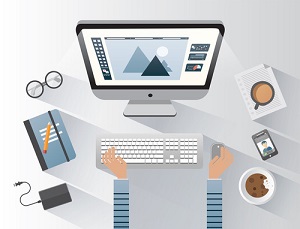9 Reasons to Hire an Instructional Designer for Your Mobile Learning Courses

So you know how important self-directed learning is, and you’ve decided to give it a go. You want your employees to evolve, grow and become the best possible additions to your team they can be. You’ve done the research and chosen mobile learning as your instructional vehicle, because you want to take advantage of downtime, maximize employee availability, and give your workers the freedom to learn from work, home, a café, or when they’re on the move.
First of all, congratulations: you’ve made some very progressive choices. But chances are, you hit a wall pretty quickly after making them. Why? Because many managers, team leaders and training execs lack the skills to create the best possible mobile learning content. Even if you’re an absolute master of the subject material, getting it into a form that works best for learning is a high-level skill you may not have.
Well, that’s okay. Instructional designers can help. Their expert knowledge about what makes good content stick with learners, their understanding of the range of possible devices to use for mobile learning, and a raft of other skills all qualify them for this daunting task. Without further ado, here are 10 reasons to hire an instructional designer.
1. Instructional designers Understand Mobile Devices
Mobile is still relatively new technology. While mobile designers are still working out the kinks, however, consumers already expect a seamless experience that delivers content to them quickly, without interruption, in the best possible format for their individual device. You could spend countless hours learning how to make your content responsive – ensuring it adapts to all situations or devices – or you could outsource it to someone who already knows.
2. Instructional Designers Make Quality Content Plans
Even if your mobile learning is based on a mainstay technology such as PowerPoint, it is still important to deliver subject matter in a way that reaches learners. No matter what program you want to use, you can find an instructional designer who knows how to leverage that program’s strengths to deliver your content in a way that maximizes the experience for the learner.
3. Instructional Designers Mix Media Well
While you might be able to leverage a program or two when designing your own content, instructional designers can meld several all at once. For each stage of learning, the instructional designer will choose the best possible medium for that material. Your knowledge might constrain you to text, or perhaps audio or video, but an ID expert can combine traditional media with games, the web, peer-to-peer interaction, and more.
4. Instructional Designers Are Expert at Helping Learners Absorb Content
Many modes of delivery (such as highly linear content without a lot of user interaction) just don’t result in the kinds of retention you’re looking for. Instructional designers can create a more interactive, interesting and user-friendly experience.
5. Instructional Designers Understand File Size
One of the biggest issues with creating content for mobile devices such as smartphones and tablets is file size. If a file is too large for a mobile device’s relatively limited processing abilities (as compared to a laptop or desktop), the learning experience will suffer. Instructional designers have the expertise to ensure appropriate file size.
6. Instructional Designers Get Screen Size
If your content is for mobile, that means it must work for different sizes and different layouts. Instructional designers can help ensure your content reaches small smartphone owners and large tablet users alike. And they can answer even more particular questions, such as, will you be designing your coursework for landscape or portrait use … or both? This minimizes the chances of a fab experience on some devices, and a crummy one on others.
7. Instructional Designers Know How to Engage with Good Design
Placement of menus, sidebars or toolboxes all matter very much, especially on small screens. Design of content management systems (for submitting material), Dropbox spaces and peer interaction platforms are all important as well. If these aren’t your strong suits, outsource.
8. Instructional Designers Understand Simplicity
Simplicity is everything in learning, because anything that gets in the way and simply creates “noise” is distracting to the learner. Instructional designers are very good at teasing apart the goals of content, transmitting that content in pure form and helping users assimilate it without distraction.
9. Instructional Designers Free You Up for Other Tasks
As a busy manager, department head, team leader or staff trainer, you no doubt have a million things you could be doing at any given time. In order to make the best use of your precious hours, stick to what you know. Instructional designers can help you safeguard your schedule by taking over some of the work you can’t do quite as efficiently.
Of course, as you develop more and more mobile content for your team, it’s possible you will one day decide to learn the basics of instructional design for yourself. Many ID companies will even give you a tutorial to help you get started creating your own awesome content. For now, however, the most important thing is to get the material to your employees so they can learn quickly and efficiently, retain that knowledge and become their best selves.
Do you use instructional designers in your organization? Know about any other unique talents they bring to the table? Share your positive experiences with ID professionals in the comments below!
